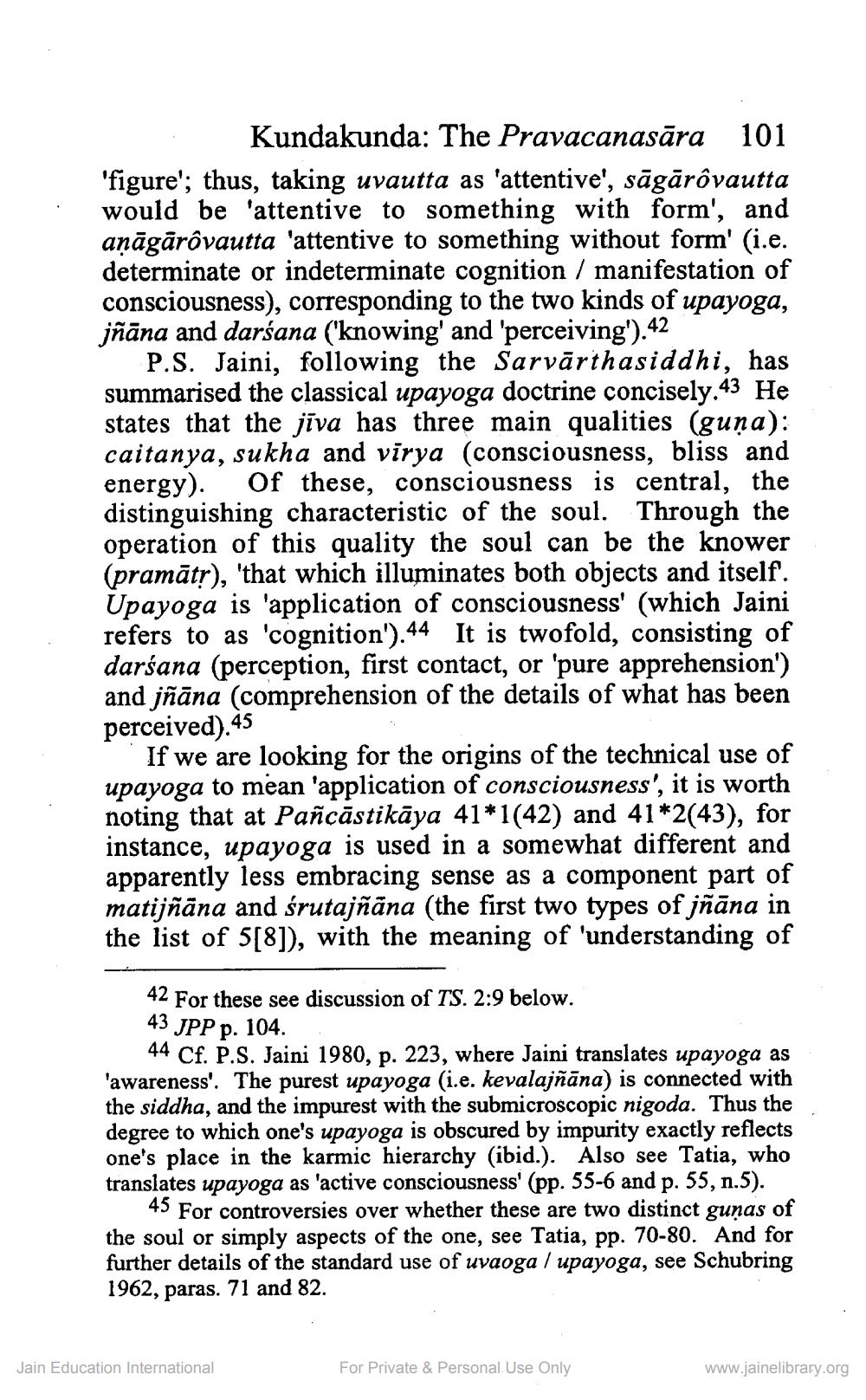________________
Kundakunda: The Pravacanasāra 101 'figure'; thus, taking uvautta as 'attentive', sāgārôvautta would be 'attentive to something with form', and anāgārôvautta 'attentive to something without form' (i.e. determinate or indeterminate cognition / manifestation of consciousness), corresponding to the two kinds of upayoga, jñāna and darśana ('knowing' and 'perceiving').42
P.S. Jaini, following the Sarvārthasiddhi, has summarised the classical upayoga doctrine concisely.43 He states that the jīva has three main qualities (guna): caitanya, sukha and virya (consciousness, bliss and energy). Of these, consciousness is central, the distinguishing characteristic of the soul. Through the operation of this quality the soul can be the knower (pramāts), 'that which illuminates both objects and itself. Upayoga is 'application of consciousness' (which Jaini refers to as 'cognition').44 It is twofold, consisting of darśana (perception, first contact, or 'pure apprehension') and jñāna (comprehension of the details of what has been perceived).45
If we are looking for the origins of the technical use of upayoga to mean 'application of consciousness', it is worth noting that at Pañcāstikāya 41*1(42) and 41*2(43), for instance, upayoga is used in a somewhat different and apparently less embracing sense as a component part of matijñāna and śrutajñāna (the first two types of jñāna in the list of 5[8]), with the meaning of 'understanding of
42 For these see discussion of TS. 2:9 below. 43 JPP p. 104.
44 Cf. P.S. Jaini 1980, p. 223, where Jaini translates upayoga as 'awareness'. The purest upayoga (i.e. kevalajñāna) is connected with the siddha, and the impurest with the submicroscopic nigoda. Thus the degree to which one's upayoga is obscured by impurity exactly reflects one's place in the karmic hierarchy (ibid.). Also see Tatia, who translates upayoga as 'active consciousness' (pp. 55-6 and p. 55, n.5).
45 For controversies over whether these are two distinct gunas of the soul or simply aspects of the one, see Tatia, pp. 70-80. And for further details of the standard use of uvaoga / upayoga, see Schubring 1962, paras. 71 and 82.
Jain Education International
For Private & Personal. Use Only
www.jainelibrary.org




